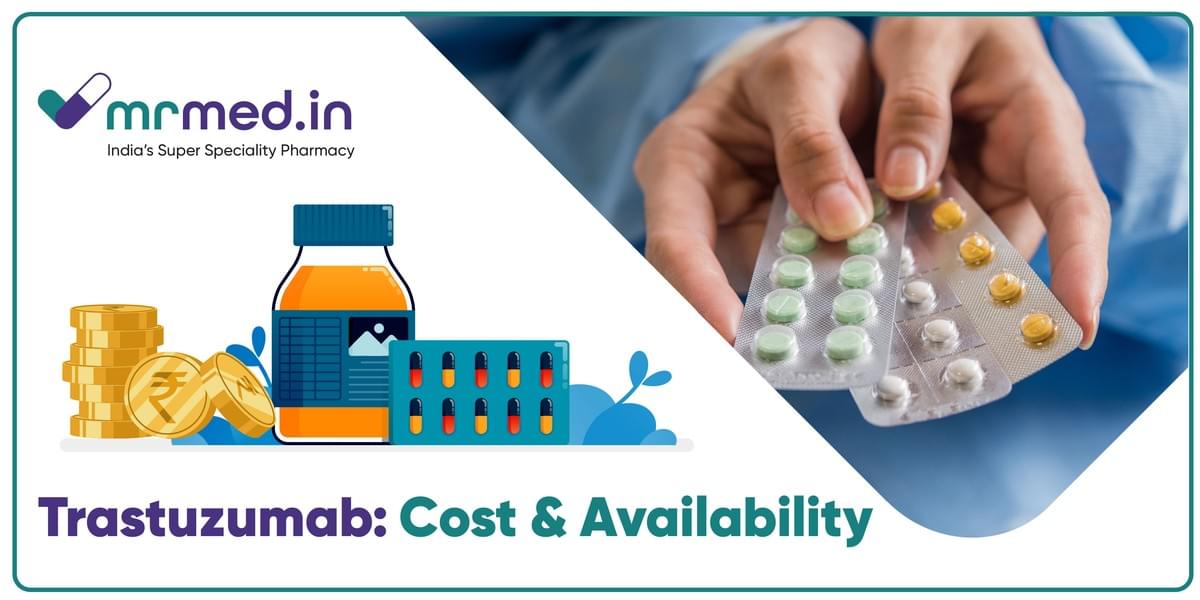Facing a cancer diagnosis can be a daunting experience, filled with emotional, physical, and financial hurdles.
For those grappling with HER2-positive cancers, trastuzumab—often recognised under its brand name, Herceptin—emerges as a pivotal player in their treatment strategy. Its role in targeting and curbing the proliferation of cancer cells is well-established.
Still, for many, the financial burden and availability of this critical medication add layers of stress and complexity to an already overwhelming situation.
How does trastuzumab help cancer?
Trastuzumab is an advanced anticancer drug specifically developed to target HER2-positive cancers. The HER2 protein, which is overexpressed on the surface of certain cancer cells, plays a crucial role in driving their growth. Here’s how trastuzumab helps in the treatment of cancer:
- Targeted action: Trastuzumab binds directly to the HER2 protein on cancer cells. By attaching to this protein, trastuzumab inhibits the cancer cells' ability to grow and divide.
- Inhibition of cancer cell proliferation: Trastuzumab binding to HER2 interrupts the signalling pathways that promote cancer cell proliferation, effectively slowing down or stopping the spread of the cancer.
- Minimised damage to healthy tissue: This targeted approach ensures that trastuzumab primarily affects the cancer cells, thereby reducing collateral damage to surrounding healthy tissues compared to more generalised treatments.

Is Trastuzumab cost-effective?
The cost-effectiveness of trastuzumab is a significant concern for many patients, influenced by several factors:
- Production and distribution costs: The price of trastuzumab, including formulations like the Tarzed 440mg Injection, is affected by expenses related to its production and distribution.
- Healthcare services: Costs associated with the administration of the drug also impact the overall expense.
- Regional variability: Differences in healthcare systems and economic conditions across regions contribute to variability in pricing.
What do insurance companies pay for trastuzumab?
In many countries, health insurance can help mitigate these costs. However:
- Coverage variability: Insurance plans vary widely in terms of coverage. Some may cover the full cost of trastuzumab, while others may only provide partial reimbursement.
- Financial assistance: Patients should work with their doctors and insurance companies to learn about their coverage options and explore any available financial assistance programs to help manage expenses.
Access to Trastuzumab: A Global Perspective
The availability of trastuzumab varies significantly around the world:
- High-income countries: In these regions, the infrastructure is well-developed to support consistent access to trastuzumab. Healthcare systems typically ensure that patients receive the necessary treatments without delay.
- Lower-income and less-developed regions: Accessing trastuzumab in these areas can be much more challenging. Factors such as limited healthcare infrastructure and higher drug costs can restrict availability.
To address these disparities, several global organisations are actively involved:
- Negotiating lower prices: Organizations like the World Health Organization (WHO) work to negotiate reduced prices with drug manufacturers to make trastuzumab more affordable.
- Supporting generic production: Efforts are made to support the local production of generic versions of trastuzumab, which can help lower costs.
- Funding and healthcare access: Non-governmental organisations (NGOs) provide funding and resources to improve healthcare access in underserved regions, aiming to make essential medications like trastuzumab more widely available.
What Financial Assistance and Support Are Available for Patients Using Trastuzumab?
Managing the financial aspects of cancer treatment, including the cost of trastuzumab, can be daunting. Fortunately, several resources are available to help patients navigate these challenges:
- Health insurance: While not always comprehensive, health insurance can provide significant support in covering the cost of trastuzumab. Patients should review their insurance plans to understand the extent of their coverage.
- Patient advocacy groups and non-profits: These organisations often offer guidance and financial assistance options. They can help patients find resources to reduce out-of-pocket expenses.
- Pharmaceutical company programs: Many drug manufacturers have patient assistance programs that deliver free or reduced-cost medications to eligible individuals. Patients are encouraged to explore these programs early in their treatment to receive the necessary support.
The Future of Trastuzumab and Access to Cancer Treatments
The field of cancer treatment is rapidly developing. Research and development are focused on improving the efficacy, accessibility, and affordability of anticancer medicine. Innovations in drug formulation and delivery are expected to enhance the effectiveness of trastuzumab and similar medications.
Key developments include:
- Biosimilars: These are medications similar to the original trastuzumab but not identical. They promise to make treatments more affordable and widely available while maintaining effectiveness.
Ongoing efforts aim to address treatment access disparities and reduce costs, ensuring broader availability of vital cancer therapies.
Wrapping up
Understanding the cost and accessibility of trastuzumab is vital for effectively managing HER2-positive cancers. While this drug represents a breakthrough in treatment, the financial and accessibility challenges it poses are significant.
Patients can navigate these challenges by staying well-informed about their insurance options, seeking financial aid, and taking advantage of global health initiatives.
As the landscape of cancer treatment evolves, advancements will focus on making medicines more affordable and accessible. By being proactive and informed, patients can overcome these barriers and concentrate on their recovery and well-being.
